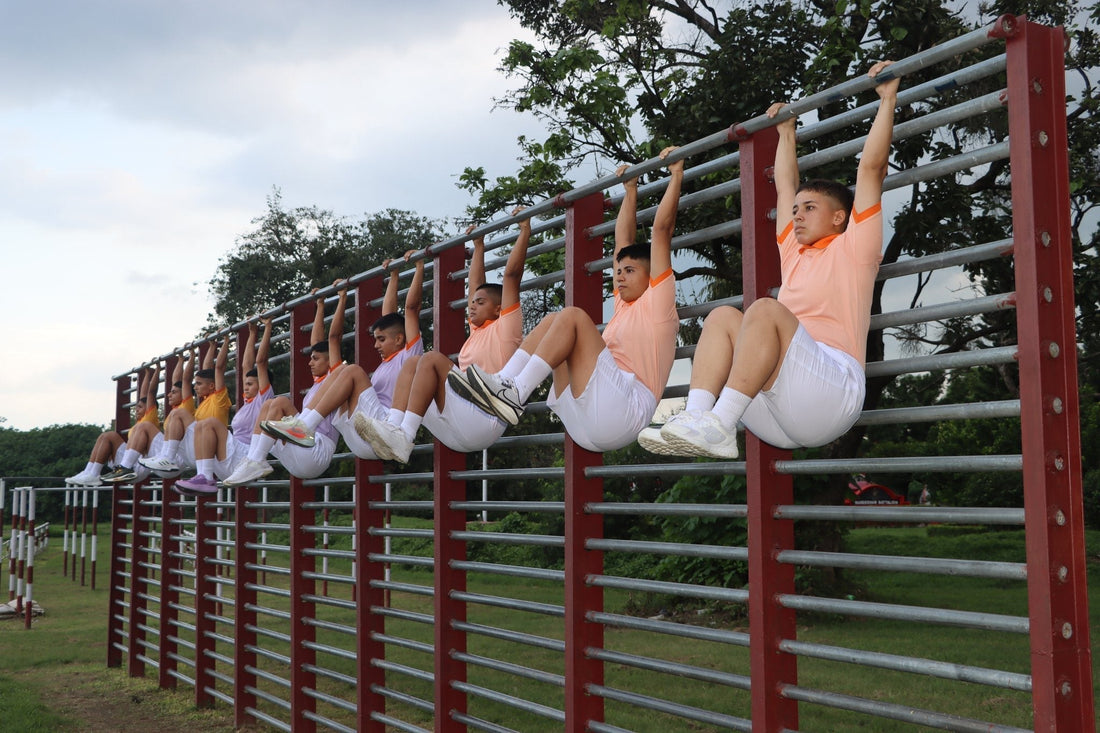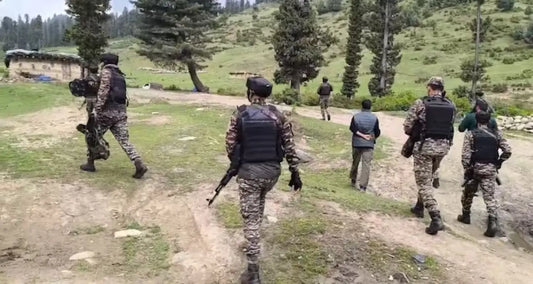Meet the 1st Batch of Lady Cadets Training at the Indian Military Academy

On July 15, 2025, the Indian Military Academy (IMA) in Dehradun, Uttarakhand, etched a new chapter in its 92-year history by welcoming its first-ever batch of women officer cadets. This landmark event marks a significant stride toward gender inclusivity in the Indian Armed Forces, breaking a long-standing male-only tradition at one of the country’s most prestigious military institutions.
Eight women cadets, who began their journey at the National Defence Academy (NDA) in August 2022, have transitioned to IMA for a rigorous year-long training program, setting the stage for their commissioning as officers in 2026. This development not only reflects the Indian Army’s evolving approach to gender equality but also serves as an inspiration for future generations of women aspiring to serve the nation in uniform.
A Journey Rooted in a Landmark Ruling
The induction of women into IMA is a direct outcome of a pivotal Supreme Court ruling in August 2021, which mandated that women be allowed to take the NDA entrance exam, thereby opening the doors of the tri-services academy to female candidates. This decision came 18 months after another landmark ruling that granted women officers in the Indian Army, who joined through Short Service Commission (SSC), the right to permanent commissions and command roles.

The first batch of 19 women cadets joined NDA in August 2022, and after completing three years of rigorous training across six terms, 18 graduated in May 2025. Of these, eight chose to serve in the Indian Army, leading to their historic entry into IMA.
The IMA, established in 1932, has long been the cradle of leadership for the Indian Army, producing some of the nation’s finest military officers under its motto, “Veerta Aur Vivek” (Valour and Wisdom). Until 2025, it remained the only major military academy in India that did not train women, with female officers traditionally trained at the Officers Training Academy (OTA) in Chennai for Short Service Commission. The inclusion of women at IMA signifies a transformative shift, aligning the institution with the broader push for gender parity in the armed forces.
The Trailblazers: Who Are These Women?
The eight women cadets now training at IMA are part of a pioneering group that has already made history at NDA. Among the 126 women cadets currently enrolled at NDA, these eight represent the vanguard of a new era. Hailing from diverse regions such as Haryana, Uttar Pradesh, Rajasthan, and beyond, they embody the spirit of India’s youth—determined, resilient, and driven by a sense of purpose.
While specific names of the IMA cadets have not been widely publicized, their predecessors at NDA, such as Cadet Ishita Sangwan, Cadet Ritul Duhan, and Cadet Shriti Daksh, provide a glimpse into the caliber of these trailblazers. Ishita Sangwan, from Haryana, emerged as a standout leader, earning the title of Division Cadet Captain at NDA for her excellence in academics and leadership. Ritul Duhan made history as the first woman Battalion Cadet Captain, while Shriti Daksh, daughter of a retired Wing Commander, topped the Bachelor of Arts stream. These women, and others like them, have demonstrated exceptional physical endurance, academic prowess, and leadership skills, qualities that the IMA cadets are expected to carry forward.

Adapting IMA for Gender Inclusivity
To accommodate its first batch of women cadets, IMA has undertaken significant infrastructural and procedural changes to ensure a seamless and equitable training environment. Separate living quarters have been designated for female cadets, complete with gender-specific amenities such as fingerprint-based locks for privacy and security. However, the training itself remains integrated, with women cadets assigned to different companies but training alongside their male counterparts. This mixed-training approach, successfully implemented at OTA for over three decades, fosters camaraderie and ensures that all cadets are held to the same rigorous standards.
IMA officials have also drawn on the expertise of other military academies to prepare for this transition. Teams visited the Officers Training Academy in Chennai, the Air Force Academy in Dundigal, and the Indian Naval Academy in Ezhimala to study best practices for training women and addressing gender-specific requirements. These efforts have led to updates in training schedules and methodologies, ensuring that women cadets receive the same high-quality instruction as their male peers while accommodating their unique needs.
In a symbolic move toward inclusivity, IMA has revised its terminology, replacing the traditional “gentlemen cadets” with the gender-neutral “officer cadets.” This change reflects the academy’s commitment to fostering an inclusive culture, where service and sacrifice transcend gender.

The Training Regimen: A Test of Valour and Wisdom
The one-year training program at IMA is designed to mold cadets into officers capable of leading with courage, intellect, and integrity. For the women cadets, this phase builds on their three years at NDA, where they underwent rigorous academic, physical, and military training alongside male cadets. At IMA, the focus shifts to specialized army training, preparing them for the challenges of leadership in operational and combat environments.
The curriculum at IMA includes a blend of intellectual, moral, and physical development. Cadets undergo weapons training, including close-quarter battle and jungle lane shooting, as well as exercises like “Chindit,” where they simulate real-world scenarios such as counter-terrorism operations. Physical fitness is paramount, with activities ranging from cross-country runs to sports like hockey, basketball, and boxing. The academy’s 1,400-acre campus, home to iconic facilities like Chetwode Hall, Khetarpal Auditorium, and Somnath Stadium, provides the backdrop for this transformative journey.
The women cadets, like their male counterparts, are expected to embody the IMA’s ethos of camaraderie, esprit de corps, and patriotism. As Lieutenant Colonel Anu Singh Randhawa (retd), a 21-year veteran of the Army Ordnance Corps, noted, “I don’t foresee any hurdles as the army has been training women at OTA for more than 30 years, and similar training standards and practices will be adopted by IMA. Gender-specific requirements will be addressed too. There has been full acceptance of women in the military.”
Challenges and Opportunities
While the induction of women into IMA is a cause for celebration, it is not without challenges. The integration of women into traditionally male-dominated spaces has sparked discussions about operational dynamics and command structures. In October 2024, Lieutenant General Rajeev Puri raised concerns about the integration of women in sensitive roles, citing potential complexities in command dynamics. However, such apprehensions are seen as initial hurdles that can be addressed through experience and evolving standards.
The Indian Army has made significant strides in integrating women into operational roles. Approximately 60% of women commanding officers are currently leading units in sensitive areas, including forward locations in the Northern and Eastern Commands. Over 145 women officers have been approved for promotion to Colonel, with around 115 already commanding their units. While combat roles in infantry and tanks remain restricted, the induction of women into IMA signals a broader trend toward equal opportunities, with many believing that full inclusion in combat arms is only a matter of time.
A New Era of Nari Shakti
The arrival of women cadets at IMA is more than a symbolic gesture; it is a structural shift that paves the way for long-term career opportunities, including permanent commissions and command roles. Social media platforms, particularly X, have erupted with pride and celebration, with posts hailing the cadets as “protectors of the land” and “trailblazers” who embody “Nari Shakti” (Women Power). One user wrote, “These young girls will soon take the Last Step from hallowed ground of Chetwode Hall to become first lot of women officers to pass out from IMA… they all are just officers irrespective of gender.”
The women cadets at IMA are not just breaking barriers; they are laying the foundation for future generations. As Cadet Ritul Duhan, a pioneer from the NDA batch, reflected, “We’re not just finishing our training—we’re laying the foundation for many more women to follow.” Their journey is a testament to the Indian Armed Forces’ commitment to equality and the enduring spirit of those who dare to dream big.
Looking Ahead
As the eight women cadets march through the hallowed grounds of IMA, they carry the hopes of a nation and the dreams of countless young women aspiring to serve. Their training, set to culminate in their commissioning as officers in 2026, will mark another historic milestone in India’s defense history. The Indian Military Academy, once an all-male bastion, is now a beacon of inclusivity, proving that service knows no gender.
This moment echoes the legacy of trailblazers like Major Priya Jhingan, the first lady cadet to join the Indian Army in 1992, and historical figures like Rani Laxmi Bai, who led with unmatched courage in combat. As these women cadets prepare to lead from the front, they are not just joining the ranks of the Indian Army—they are redefining what it means to be an officer, inspiring a new era of leadership rooted in valour, wisdom, and equality.




















18 comments
Army nayvi
Hii
ITS REALLY A PROUD MOMENT FOR THE ENTIRE COUNTRY. WOMEN HAD BEEN THE BEST AS EVER AND THE SAME WILL BE PROVED AHEAD. THOUGH THERE ARE SOME CHALLENGES CONSIDERING THE ACCEPTANCE AS WE ARE NOT HABITUAL OF HAPPENING SO, IT’S GOOD TO SEE TO HAVE THE EQUAL OPPORTUNITIES FOR ALL. JAI HIND.
Gender inclusivity in Armed Forces is at the cost of Poor Force Multipliers. If women physical training standards are low compared to males, then commeanding male soldiers with double their prowess is not possible and suspect. This does not lead to their morale boost under any circumstances. Leadership is by Personal Example and not by mere Lip Service. Civvy street and political, bureaucratic leadership is totally different from military leadership. I hope better sense prevails in our decision making leadership and we do not ape the west – a lot of turmoil, administrative challenges and churning is going on in their forces. Their forces have not experienced any increased fighting strength. On the contrary multiple command and functioning problems have surfaced leading to ample wastage of time and resources. Historically, men and women were employed as per their capabilities. We should heed to this sane understanding practiced over centuries. Jai Hind.
Gender inclusivity in Armed Forces is at the cost of Poor Force Multipliers. If women physical training standards are low compared to males, then commeanding male soldiers with double their prowess is not possible and suspect. This does not lead to their morale boost under any circumstances. Leadership is by Personal Example and not by mere Lip Service. Civvy street and political, bureaucratic leadership is totally different from military leadership. I hope better sense prevails in our decision making leadership and we do not ape the west – a lot of turmoil, administrative challenges and churning is going on in their forces. Their forces have not experienced any increased fighting strength. On the contrary multiple command and functioning problems have surfaced leading to ample wastage of time and resources. Historically, men and women were employed as per their capabilities. We should heed to this sane understanding practiced over centuries. Jai Hind.